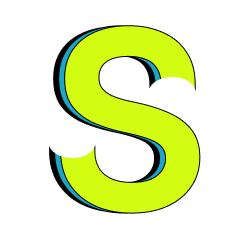My product management expertise pushes product-market fit to a whole new level:
the market-solution fit
Follow the evolution

We have long been talking about product-market fit.
The Jobs-to-be-done framework has taught us to work backwards from the customer. While it is the BEST way to get started, it overlooks the business side and its ability to build, release and maintain the solution.
Market-solution fit aims to cover all the grounds necessary to create a win-win situation, creating a full picture of the demande and supply sides fo the solution.

Managing products means having an accurate understanding of the customers’ struggles and the business’ capabilities to address these in a profitable manner. It brings us to focus on the 3 key characteristics of the market-solution fit.
Desirability
The etymology of the word “desire” takes us to the latin words desiderare, which breaks down into de- meaning "from" and Sider- meaning “target” or “goal”. When people realize they have a problem worth solving, and they are in the market for solutions, they are in reality in a position of missing on reaching a goal. They seek a progress towards a better state which must be enabled by the solution provided.
To create desirability means understanding the deep motivations that people have in their lives, whether personal or professional. It is not enough to think about the rational part of the decisions making.
Solutions need to offer emotional (how does it make people feel) and transformational (how does it make people become better versions of themselves) benefits as well. These irrational layers reveal a lot more about the target audience, their state of mind and their aspirations. They create a deeper sense of the Why people buy a solution.
Viability
The word viability has its root in the French word viable, which means “capable of life”. It is not enough to have a desirable product if it cannot pass the test of time. The test of time is challenged by the sustainability (in the business sense of the word) and profitability of the solution. It implies having a good understanding of the business model, the operations that bring a competitive advantage and the financial implications of doing, not doing or outsourcing.
We are primarily concerned about operations affecting the way the solution is brought to market: marketing and communication, sales and distribution, partnerships and support. These activities must convey the value in the most impactful way throughout the entire customer journey, and particularly reach the target audience where and when they are most receptive to encountering the solution.
Needless to say that the cost base implied by these activities is half the answer to being profitable. On the revenue generation side, it is not about slapping a number and hoping customers will buy. Research must be done to understand the rational and irrational part of the customer’s purchase decision process. It boils down to understanding How we want to go about serving the customers.
Feasibility
Feasible literally means “it can be done”. To assess the feasibility businesses consider the resources at disposal (internal capabilities), and the suppliers in place (external capabilities). It is part of the decision making process to pursue an initiative (go) or give up (no go).
From a supply side’s perspective, feasibility implies that a technology is available to deliver a solution to target customer’s struggle in a cost efficient manner. It always affect engineers who must deal with constraints and make trade-offs.
From a demand side’s perspective, feasibility means that the envisioned solution must fit the context in which the solution will be used and respect the level of technological literacy customers have.
These two perspectives are not mutually exclusive. Engineering decisions affect the experience (e.g. loading speed) and vice versa. Together they inform the What can be done.

“Good design successfully manages the tensions between user needs, technology feasibility, and business viability.”
Tim Brown
Designer & author




